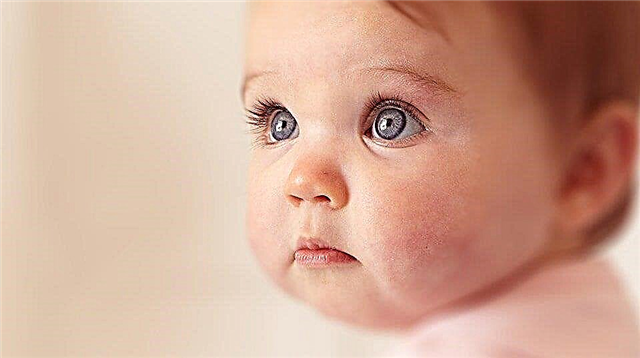Each mother looks after her child. The developmental norms of a child show how he should be. If there is a serious lag, this is a symptom of pathology.

Child development before birth
How long does intrauterine development take
They begin to monitor how the baby grows even in the prenatal, that is, before the baby is born. The norm for the duration of this period is considered to be 40 weeks, although a healthy full-term baby can be born both at 38 weeks and at 42. This time is divided into periods:
- Fetal - from conception to 8-10 weeks;
- Fetal - from 8-10 weeks to birth.
There is also a division into trimesters:
- From conception to the end of 13 weeks;
- From 14 to 27 weeks;
- From 28 weeks to birth.
The trimesters are divided according to the principle of the development area: in the first stage, the internal organs are laid, in the second stage they develop, the little man is formed externally. In the third, he is gaining the weight and height necessary to survive outside.
From what week are they observed
All over the world, it is customary to take pregnant women on a special account, assign them studies and tests in order to monitor the correct formation of the fetus and the health of the mother. In Russia, for this, they are attached to a antenatal clinic at a polyclinic or a maternity hospital.
A pregnant woman is registered in the Russian Federation no earlier than a full 8 weeks for menstruation or ultrasound. The study is prescribed even before control. The first analysis that a future mother can be prescribed is blood for human chorionic gonadotropin. It is a hormone that is released by the end of the first week of pregnancy. His testimony gives the most reliable data for this period. So, with an excessively high level of it, one can assume a multiple pregnancy, and the lack, perhaps, speaks of a dead one.

Ultrasound examination of pregnancy
The second study, which can be prescribed even before registration, is the first ultrasound. It is done to confirm the gestational age and the location of the embryo in the uterus, not the fallopian tubes. They also look at their number and viability - on average, at 7 weeks in this study, the heartbeat of a future person is heard.
Then the PDR is determined - the estimated date of birth. It is calculated according to the mother's menstrual calendar. You can also calculate the day using a special pregnancy calculator.
How a baby is formed before birth
Everything starts with two cells - the gametes of the mother and the father. They merge to form one cell. A whole person will grow out of her, but for now she stores all the information about what he will be. Many mothers are interested in how the baby grows in their belly. It goes like this:
- The origin of life begins with fragmentation - by the 5th day, several dozen emerge from one cell. In addition, a hollow ball is formed from them - a blastocyst.
- About a week after conception (on average, three weeks after the last menstruation), the embryo migrates from the fallopian labor, where fertilization took place, into the uterus. There, it is introduced into the mucous membrane - attachment.
Note! Before the fetus is attached to the wall of the uterus, it is impossible to know about pregnancy. Neither blood for hCG nor tests will give results. In the second or third weeks, this is also difficult to do, but possible. That is why it is usually diagnosed at 3-4 weeks, that is, by the end of the first month. An ultrasound will give a result no earlier than 5 weeks, or even later - the embryo will simply not be seen before.

Embryo development stages
- By 4 weeks from conception (many already know about their position by this time), the fetus has a beating heart (ultrasound will show it later), blood circulation, all the most important internal organs, including the brain, begin to develop. By this time, the future baby has already formed an umbilical cord, there are rudiments of limbs, eye sockets, development continues.
- Moms wonder what a baby looks like in their belly. By the end of the first trimester, he finally looks like a human. He already has all the internal organs, there are rudiments of limbs and distinguishable facial features. It is protected by the placenta.
- In the second trimester, the development of what was laid down in the first one continues. By the middle of pregnancy (20 weeks), most women will find out about the sex of the child at screening (checking the developmental norms by ultrasound). On the head, the crumbs begin to grow hair, on the hands - marigolds. He is actively moving, the expectant mother already feels this.
- The closer the time of birth, the more the child resembles his parents, the less space is left for him to move.
Fetal development rates by week
The development of the baby's fetus is monitored by doctors. One of the most informative studies is ultrasound. With its help, fetometry is carried out - measurements of parts of the fetus, which are carried out at 1, 2, 3 screenings. This allows the infant's development to be tracked weekly. If, for example, the head volume indicator lags behind, this is a symptom of intrauterine growth retardation.
A lot of things are measured during this study, the key indicators are the approximate weight, height, volume of the chest, head, length of the hip bone. The average rates of these indicators of baby's development by week can be found in the table below.

Basic fetometry norms: BPR - bipariental size, DB - thigh length, DHA - chest length
Important! A description of the result obtained is given by the ultrasound doctor. This skill requires serious training, so you should not evaluate the data obtained on your own - there is a high probability of error.
Fruit weight
By 40 weeks, the threshold for a baby's weight is 2.5 kilograms. A small or premature baby is taken for special medical supervision.
Previously, low weight was considered a phenomenon incompatible with life - the lighter the child, the more difficult it is for him to survive. He may not breastfeed, he is very weak. Today, with the development of medicine, babies with a birth weight of even only 500 grams are nursed.
Height
The average rate of growth parameter by 40 weeks is 50 centimeters. This indicator can be less or more. Much depends on genetics. If a baby is born 45 centimeters long, but is completely healthy and developed, this is considered normal.
Development norms of the first weeks of birth
A healthy and full-term newborn is ready for independent existence outside the womb. Of course, he still needs parental care, but he can survive without being inside the womb. The development of a newborn after birth by weeks is striking - in such a short time, the baby changes very much.

Newborn baby
The average weight of a newborn is 3 kilograms. There are babies who weigh more than 4, even 5 kg at birth, but they are rare. The average height of a newborn is 50-55 cm. Therefore, it is customary to buy clothes of size 56 for discharge, in a larger one - the crumb will drown. The baby looks like a toy - just as small and fragile, which is why parents, especially dads, may be afraid to take him in their arms.
A newly born baby already knows a thing or two. For instance:
- Suck milk from the mother's breast;
- Crying to express discomfort;
- Distinguish between maternal smell and voice;
- Grab a small object embedded in the palm of your hand;
- To step over with his legs when the baby is held in weight and set with his feet on a flat surface (of course, he is not allowed to hold the weight);
- Push off with your legs from the support while lying down.
It is clear that most of these skills exist only through reflexes. But their presence is an indicator of normal development.
The development of the newborn by week is rarely described by pediatricians. This happens because it is easier to assess the achievements of the first month. To summarize, here's how the first weeks differ:
- 1st: the baby will lose up to 8% of its birth weight;
- 2nd: it will begin to peel off, newborn acne will appear;
- 3rd: the baby will develop a personal feeding regime;
- 4th: will try to raise the head and get acquainted with colic.
Development up to a year
The most eventful year in the life of any person is the first. For him, a newborn baby becomes a very independent baby. Nothing will make the other 365 days in a row even richer in discovery than this time.

How a child changes from birth to one year
Rates from month to year
Table of the main age-related changes that confirm that the baby is developing normally
| Age (by months) | Weight, kg) | Height (cm) | Speech | Physical | Mental |
|---|---|---|---|---|---|
| 1 | 3,5-5 | 53,5-54,5 | Cry | Muscle tone gradually disappears | Fixes a gaze on an object, follows it |
| 2 | 4,3-6 | 57-57,7 | Learns to lift and hold the head while lying down | Knows how to smile, learns to laugh | |
| 3 | 5,3-6,9 | 60-61 | Humming and laughter appear. Makes different sounds with the mouth | Strengthens neck holding success | Concentrates on the subject, distinguishes the mother's face |
| 4 | 5,8-7,7 | 62-64 | Develops coordination of movements: tries to grab an object in front of him. Learns to turn on its side. | ||
| 5 | 6,2-8,4 | 64-67 | He masters flips on his stomach and back, tries to get on all fours. | Mastering the action with an object, grabbing, throwing, disassembling it, studying | |
| 6 | 7-9 | 66,6-68 | The appearance of babbling (repetition of syllables one after another) | He knows how to crawl on his bellies, stands on all fours, sits down uncertainly. | |
| 7 | 7,2-10 | 67,5-69,5 | Sits confidently, develops fine motor skills, going through small objects. | Knows how to transfer toys from hand to hand, responds to his name, loves to play with his parents | |
| 8 | 7,2-10,4 | 70-71 | Knows how to clap. With his hands he does more and more small work. Crawls on all fours. | ||
| 9 | 8,1-11 | 70-73 | Rises independently at the support. | Understands individual words, speech addressed to him | |
| 10 | 8,2-11,5 | 72-74 | The first conscious simple words | Begins to move along the support. | |
| 11 | 8,9-11,5 | 73,5-75 | The first independent steps, climbs onto small obstacles, knows how to get down, for example, from the sofa. | Understands the prohibition, imitates an adult. Tries to manipulate parents. | |
| 12 | 9-12 | 75-80 | Tries to walk with a load, step up stairs with the help of an adult. |
Attention! All of the above norms are approximate, emphasizes the famous pediatrician Komarovsky. If the child is developing at his own pace, it is normal if he is healthy. Because development is greatly influenced by individual characteristics. For example, girls are usually smaller than boys, and this is not a problem.

One year old baby
It seems incredible that in less than two years, from two cells indistinguishable by the eye, a whole person (or even more than one) is obtained, but this is so. To raise a child healthy, his parents must know the norms of child development. For any controversial points, you should consult a pediatrician.



